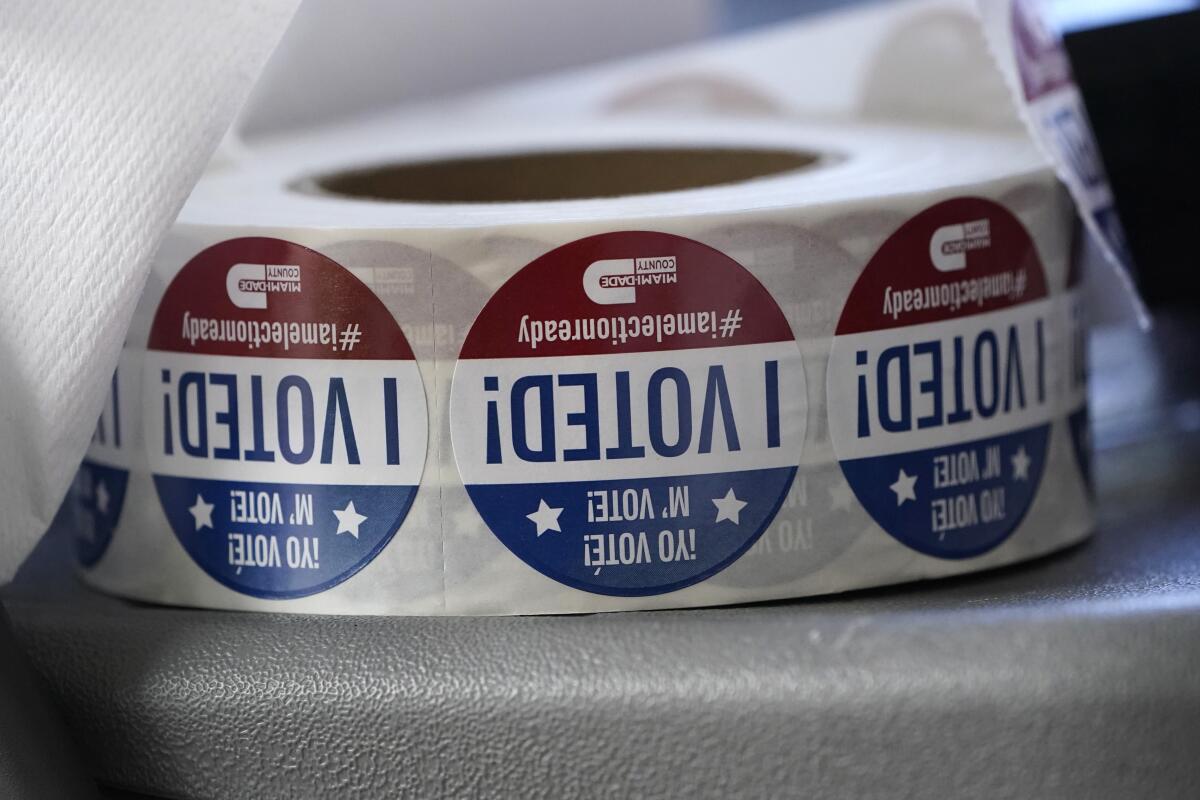How the Reality Check Insights poll was done

- Share via
The Los Angeles Times and Reality Check Insights, a California-based data analytics firm, teamed up to survey the public on underlying values that shape public opinion.
The poll, which was conducted in English and Spanish, uses a method that differs from traditional phone-based surveys. Here’s how it works:
Like other surveys, Reality Check Insights uses sampling to recruit survey respondents. The traditional method used by polling organizations is to randomly call individuals and ask those who respond to take a survey. That has gotten increasingly difficult as fewer and fewer people answer calls from unexpected numbers.
To deal with that problem, Reality Check Insights randomly selects addresses from a list of every address in the country. The chosen participants receive a mail invitation and a small financial incentive to take the survey. If the firm can identify people’s emails or phone numbers, they also send an invitation by email and text message. Respondents are given the option to complete the survey from their smartphone, tablet or computer, or by calling a toll-free number.
Certain types of individuals are more likely to respond to an invitation online than an invitation sent via the mail, Reality Check’s analytics show. Because of that, the firm also targets survey participants online. This dual-sampling approach allows Reality Check to reach both groups: those who are more likely to respond to a mail invitation and those who are more likely to respond to an invitation they encounter on the web.
To further ensure the sample is representative, Reality Check over-samples online respondents, recruiting more than needed. The firm selects a representative group of these participants to be included in its final results.
This methodology allows Reality Check to measure the public’s attitudes on complex subjects in a short time frame.
What’s the track record and who is on the team?
Reality Check Insights’ preelection survey in 2020 forecast President Biden’s nationwide vote share within 1 percentage point of the actual result.
Reality Check Insights’ chief data scientist is Peter K. Enns, a professor of government at Cornell University. The firm’s chief executive, Ben Leff, co-founded Reality Check Insights while graduating from Stanford Business School in 2020.
Additional methodological details
The Los Angeles Times/Reality Check Insights American Dream survey polled 1,408 people from Dec. 17 to Jan. 4. All results are weighted so that the sample population matches standard benchmarks for age, race and ethnicity, gender, education, income, metropolitan status, region, and partisanship. The results have an estimated margin of error of 3 percentage points in either direction. In addition to sampling error, question wording and order, difference in response rates and other factors can also introduce error to poll results.
More to Read
Get the L.A. Times Politics newsletter
Deeply reported insights into legislation, politics and policy from Sacramento, Washington and beyond. In your inbox twice per week.
You may occasionally receive promotional content from the Los Angeles Times.











